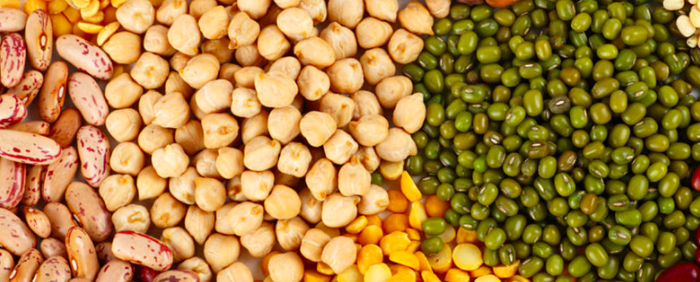
Pulses in today’s scenario are the pulse of Indian agriculture. Being the country with huge vegan population, Pulses remains one of the major commodities of our Indian food basket acting as a major source of plant based protein supplement. Despite the fact that pulses hold 6-7% of the household food budget, per capita consumption has shown a downtrend over the years of just 38 grams/day from 60 grams/day during the 1950s i.e. a 59% decrease. This is due to various factors and the foremost factor being pulses availability and high market prices.
Pulses Production Scenario:
Pulse production remained stagnant at 14mn tonnes from the 1950s and currently, it is 17.5 mn tonnes and it has not kept pace with the demand which is 22mn tonnes currently. Production, as well as productivity, has remained low in the case of pulses. Inefficiency in pulse production is due to the absence of technology and risk factors which cause the producer farmers to switch to other crops. This resulted in rapid increase of imports both in terms of quantity as well as value. Demand gap is fulfilled by imports from countries like Myanmar & Canada.
Price Instability:
The average daily retail prices of different dals have almost doubled from 2014 and 2015. This shows the presence of high volatility & uncertainty which causes high risk involved in pulses.
Minimum Support Price:
The government of India has taken initiatives for increasing the pulse production by increasing the Minimum Support Price(MSP) which is announced before the sowing season. The increase in MSP makes the farmer cultivate particular crops. But in the case of pulses, increase in MSP has very little or almost no effect on production. This is because in crops like pulses demand is higher than the production, there is no procurement and the market price is determined by market supply and demand i.e. farm gate prices is higher or near to MSP. MSP acts as a focal point for traders to decide the farmer’s prices.
The way ahead With the risk factors(both price and non-price) associated with pulse production is enormous, switching cost becomes low which makes the farmers
With the risk factors(both price and non-price) associated with the pulse, production is enormous, switching cost becomes low which makes the farmers switch over to other crops lowering the area under pulses. This stresses the need for special policy efforts to boost pulses production and productivity. In order to prevent the current scenario of pulses and to boost the pulse production, the following measures can be adopted.
1. Aggregation through Farmer Producer Organisation (FPO)
Greater fragmentation of land is characterised in India. Due to greater fragmentation of land, farmers end up in having a very low marketable surplus of commodities. This makes farmers be price takers. For the ideal environment where farmers will remain price makers and improve their welfare, agricultural operations should be aggregated through Farmer Producer Organisations. For the efficient marketing of produce, FPOs should be linked with e-NAM which will reduce the price spread by controlling marketing expenses including taxes on the transactions.
2. Bridge Yield Gap and Increase Area under Pulses
The productivity of pulses is very low in India. There exists a huge gap in yield due to poor technology in pulses sector. Research in pulses needs attention as it is almost untouched. If yield gap is bridged through research, there will be an increase in output from the existing land devoted for pulses. Pulses seed value chain is lacking and the existing ones are highly inefficient. Research is needed from developing high-quality seeds, standardising cultivation procedures to developing technology for value addition in pulses. The year 2016 was declared as “International Year on Pulses” and focus was on developing high-quality pulses and making them available all over the world. Such measures are needed to ensure bridging the inefficiencies prevailing in pulses right from farm to plates.
3. Har Khet Ko Paani: Protective Irrigation
It has been observed that when irrigation water is adequate for the production of pulses, Farmers switch over to other crops. In order to prevent this situation, Protective Irrigation should be given and it will be the game changer of the current scenario. The Har Khet Ko Paani (water to every farm) initiative under the Pradhan Mantri Krishi Sinchayee Yojana (PMKSY) programme accords top priority to the provision of life saving irrigation in pulse growing areas. This is likely to increase the area under pulses besides providing efficiency in pulse production.
Conclusion:
Despite the fact of pulses being a protein rich environmental friendly crop enabling Health and Nutrition, it remains a crop of concern as we are unable to attain self- sufficiency in pulses being the World’s largest producer and consumer of pulses. This scenario has to be reversed and Government should take initiatives to increase the Research and Development activities in pulses sector. Incentives should be provided to attract the private sector to engage in developing value chain and competitive environment for pulses in terms of production, processing and needed infrastructure from seeds till it reaches the end consumer.